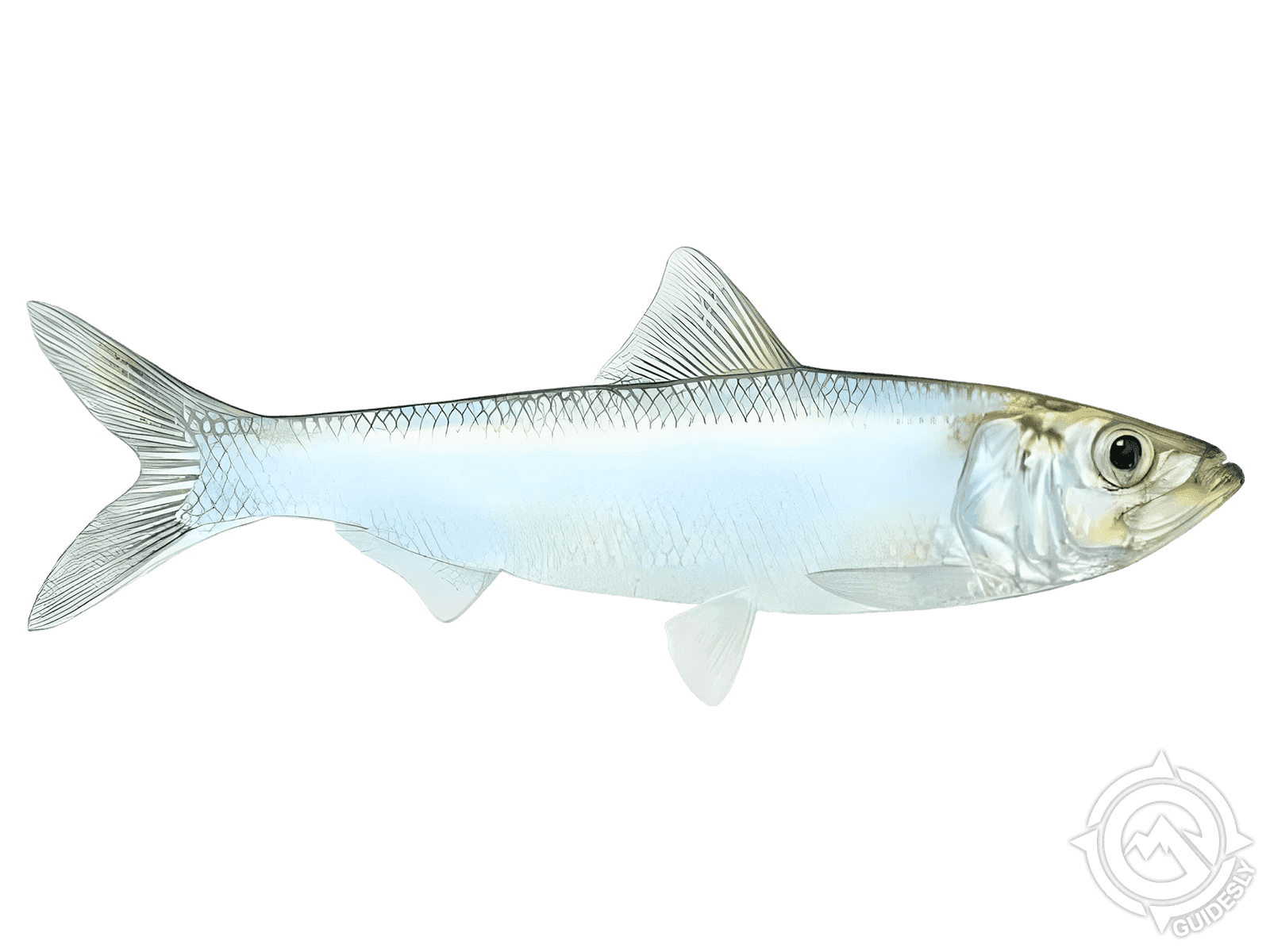Skipjack Shad

Species Details
Alosa Chrysochloris
Clupeidae
Clupeiformes
Rivers, Dams, Wing Dikes
2 - 4 lbs.
12" - 18"
Skipjack Shad (Alosa chrysochloris) Fish Description
A member of the herring family (Clupeidae), the Skipjack Shad is known for leaping out of the water to feed; thus, its name. It is also known as Tennessee tarpon, golden shad, blue herring, McKinley shad, and river shad.
Skipjack Shads have a compressed and slender body colored silver or white. Sometimes, it would appear like they reflect the color blue from their sides. Their eyes are yellow and possess protective eye lid covers. What makes the Skipjack Shad distinct from its herring or shad relatives are their remarkably large mouths, pointed snouts, and protruding lower jaws. Apart from that, they also have scutes (scales) which form a saw-tooth texture around their stomachs, making them more unique to other species from the same family.
Diet and Size
Skipjack Shads like to feed on their fellow herring or shad species like the gizzard shad, and the threadfin shad. They also like insects; both the young and adult Skipjack Shads enjoy consuming small fishes, especially minnows and goldeyes. They also like caddisflies and mayflies.
Skipjack Shads can grow up to 21 inches (on average, they measure around 14 inches) and weigh up to 3.7 pounds. They are reported to live up to 4 years old.
Interesting Facts
- Skipjack Shad contain teeth in both jaws and have two to four rows of teeth on their tongue.
- Since they migrate to spawn during early spring (early March to late April), the Skipjack Shads are known as an “early-run” species.
- The building of dams adversely affected their population because they are a migratory species of fish. These man-made creations impede their migration, thus diminishing their numbers.
- 45 percent of what seabirds consume are Skipjack Shads.
- This species travels in large schools; however, since they usually fall prey to larger predators. (this includes the northern pike, walleye, and whitefish)
Skipjack Shad — Fishing Techniques
Anglers enjoy fishing for Skipjack Shads using hook and line because they make a good bait for catfish.
Habitat and Distribution.
Skipjack Shads like clear to a little brackish and fast-flowing waters especially along the gulf coast. They thrive in reservoirs and rivers especially those whose bottoms are covered in sand or gravel. Skipjack Shads used to be aplenty in the upper part of the Mississippi River, below the most fertile spot of the Ohio River.
Now, Skipjack Shads can be found only in the drainage basins of the Gulf of Mexico; this includes the Rio Grande basin, the Mississippi basin, the Mobile River, and the Apalachicola/Chattahoochee/Flint River basin. They can also be seen leaping out of the waters of the Hudson Bay basin, specifically the Red River drainage. Skipjack Shads can also be found abundantly in the Missouri River up to the Nebraska-South Dakota waters.
The population remains stable except in areas where their migration is hindered, like in dams. Currently, they remain a species of least concern according to the IUCN. However, they were labeled a species of special concern in 1996 when they repopulated a decade before that, then became prone to (over)fishing by anglers







